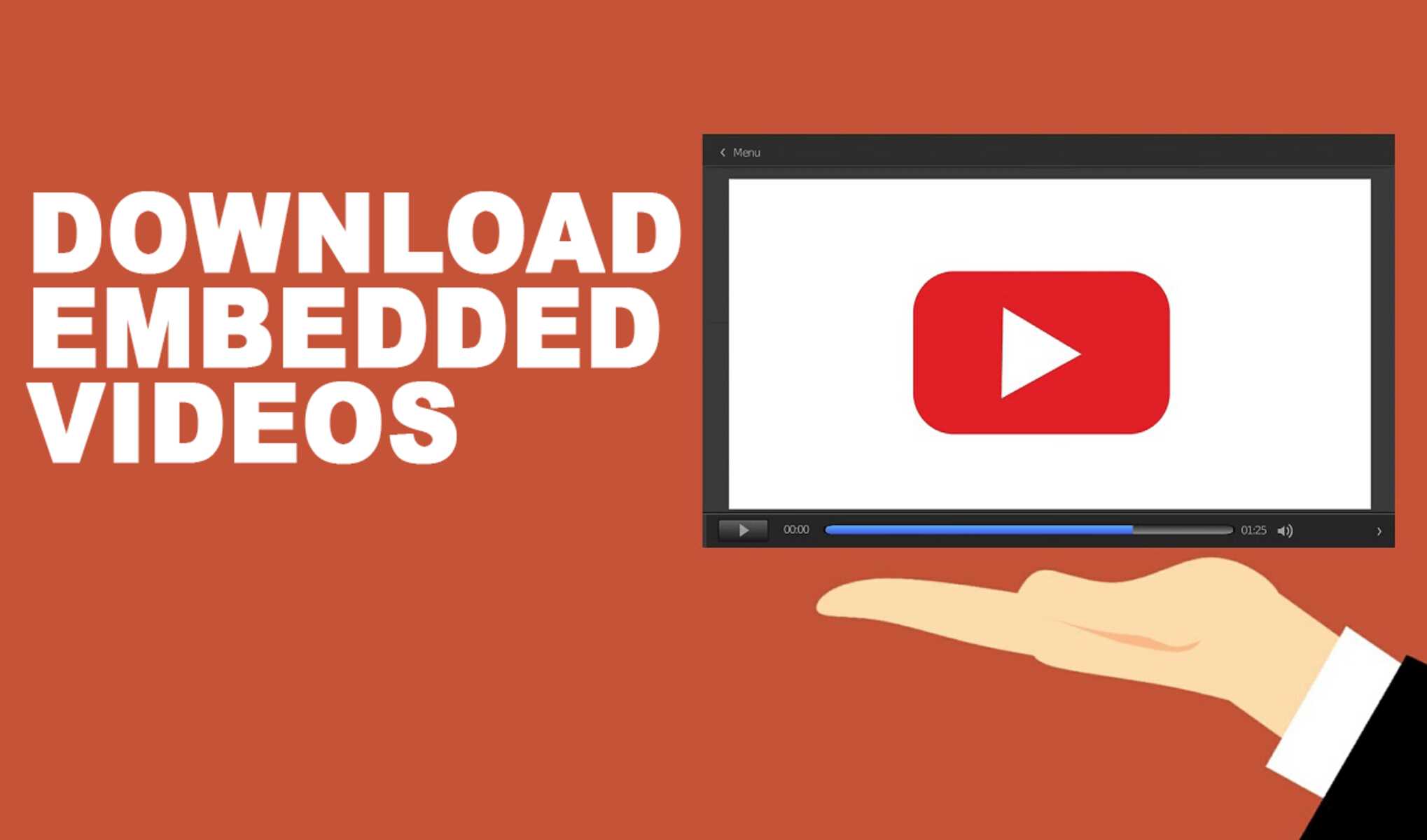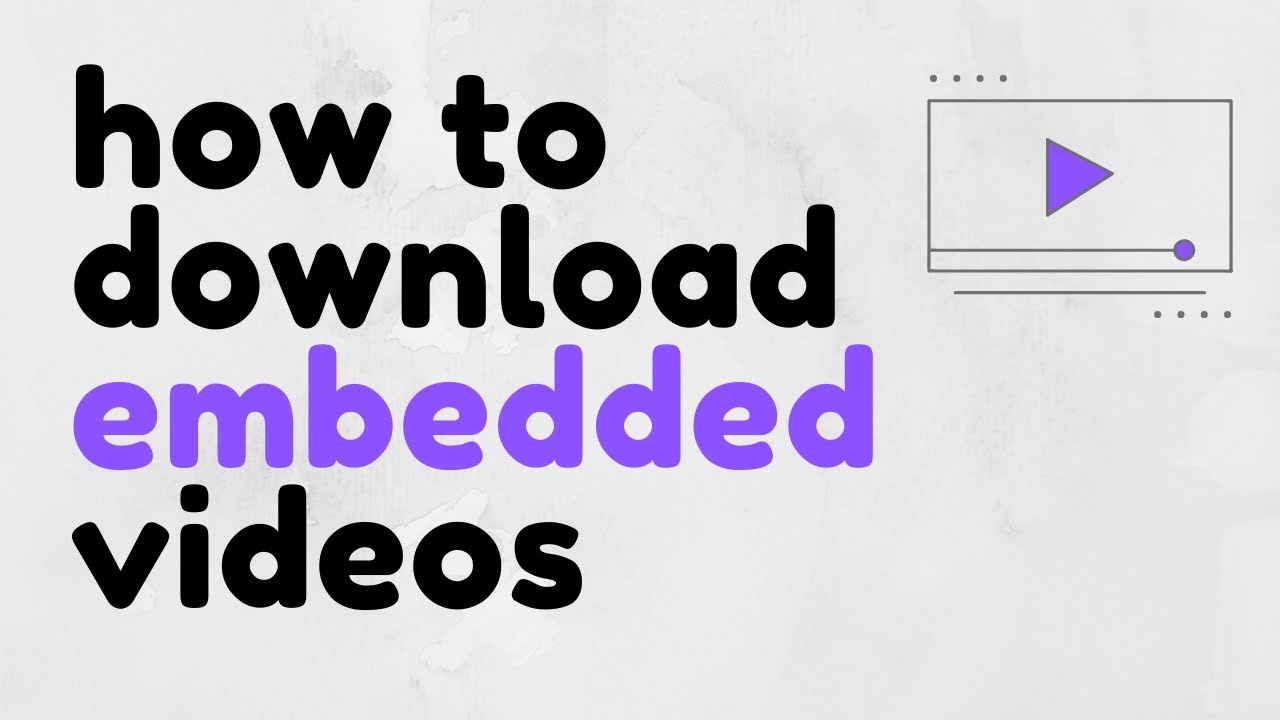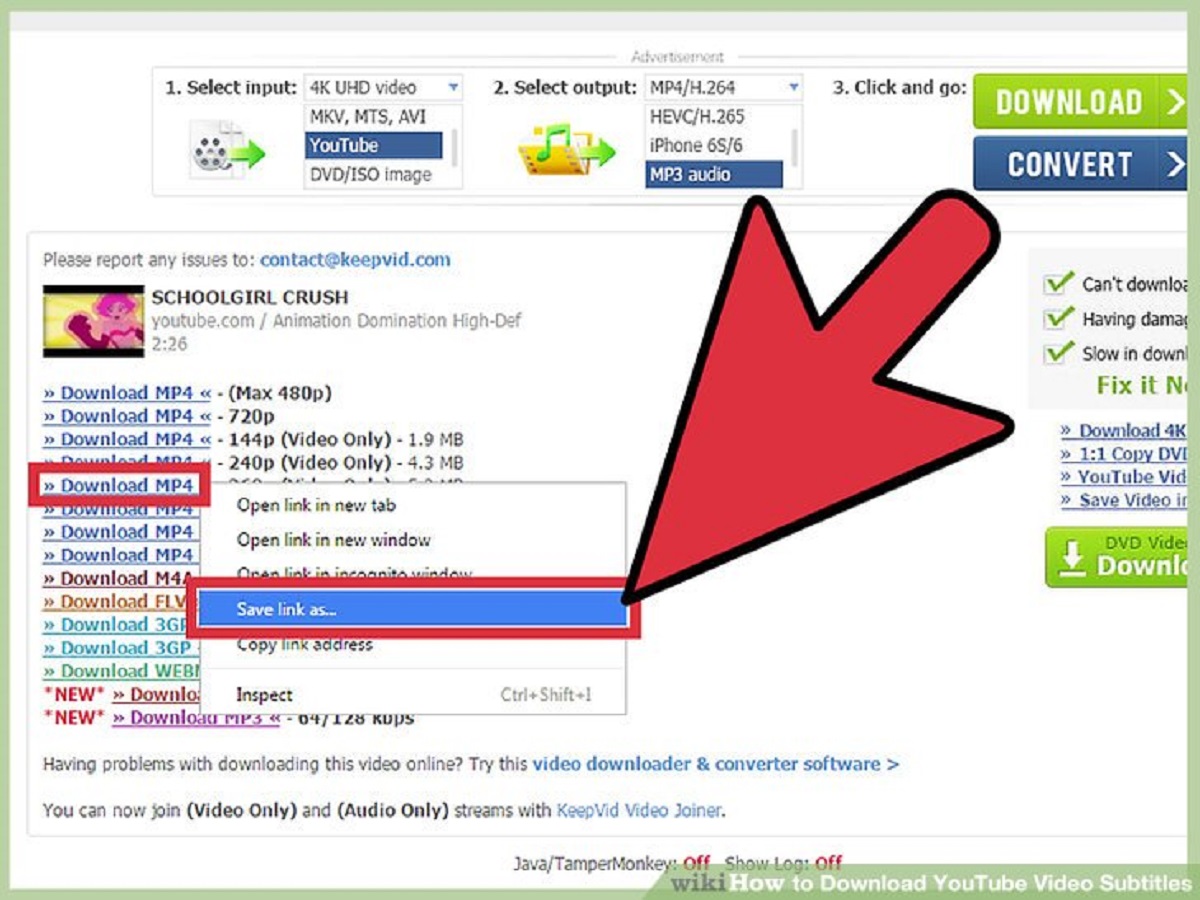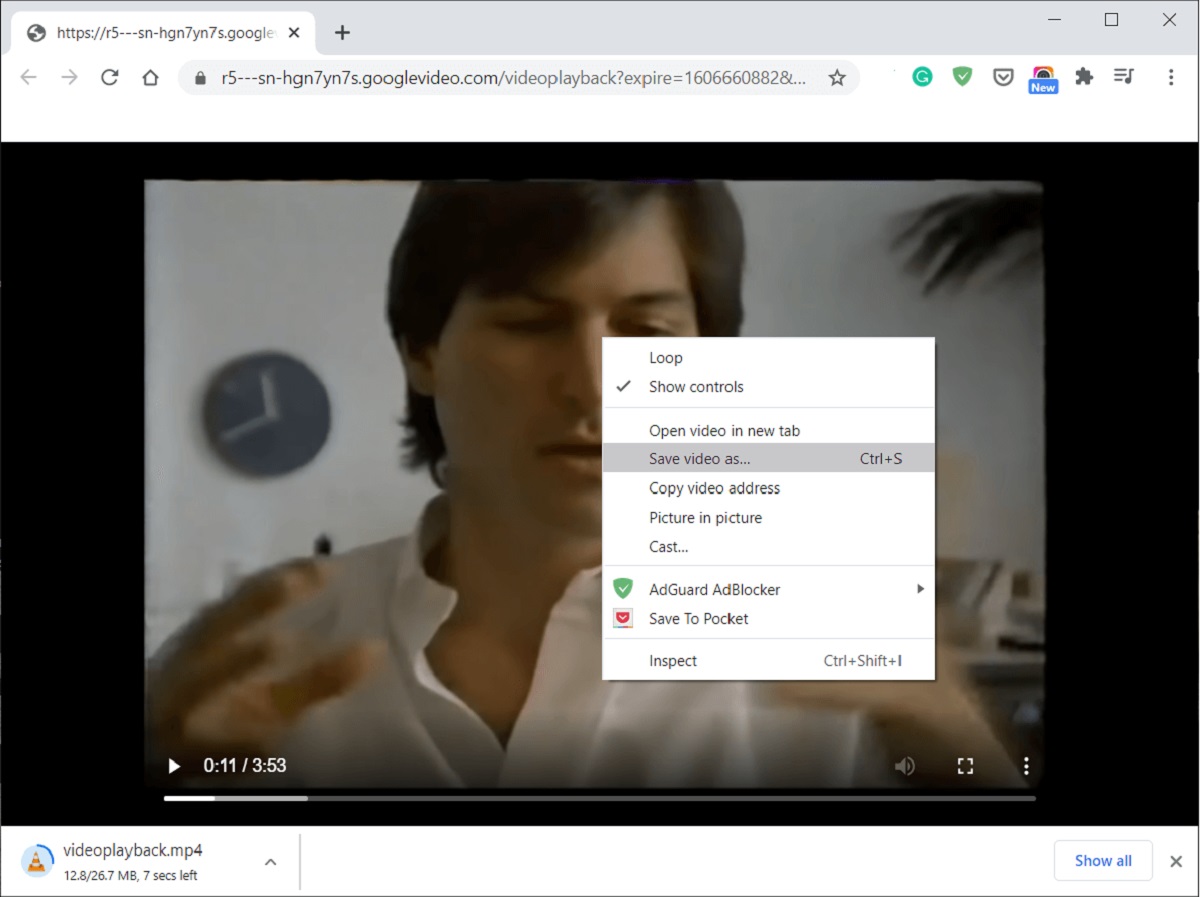Introduction
Downloading embedded videos from websites can be a daunting task, especially if you're not familiar with the technical aspects of web browsing. However, with the right tools and know-how, you can easily download embedded videos in Chrome and enjoy them offline at your convenience. Whether it's a captivating tutorial, an inspiring speech, or a delightful music video, having the ability to download embedded videos can greatly enhance your online experience.
In this guide, we'll walk you through the process of downloading embedded videos in Chrome using the browser's built-in Developer Tools. By following these simple steps, you'll be able to access your favorite videos offline, without the need for an internet connection. So, if you've ever wondered how to save an embedded video from a website, you're in the right place.
With the widespread use of embedded videos across the web, being able to download them can open up a world of possibilities. Whether you're a student looking to save educational content for later review, a professional seeking to archive valuable resources, or simply someone who wants to enjoy their favorite videos offline, knowing how to download embedded videos in Chrome can be incredibly useful.
So, without further ado, let's dive into the step-by-step process of downloading embedded videos in Chrome, and unlock the potential of offline video access.
Step 1: Open the Chrome Developer Tools
To begin the process of downloading an embedded video in Chrome, you'll first need to access the Chrome Developer Tools. This powerful feature provides a range of functionalities for inspecting, debugging, and optimizing web pages, making it an essential tool for various web-related tasks, including downloading embedded videos.
Here's how you can open the Chrome Developer Tools:
-
Right-Click and Select "Inspect": Navigate to the web page containing the embedded video, and right-click anywhere on the page. From the context menu that appears, select "Inspect." This action will open the Developer Tools panel, displaying a range of tabs and options for analyzing the web page's structure and content.
-
Use Keyboard Shortcut: Alternatively, you can use a keyboard shortcut to open the Developer Tools. Simply press "Ctrl + Shift + I" on Windows or Linux, or "Cmd + Option + I" on Mac. This quick shortcut provides instant access to the Developer Tools, allowing you to proceed with downloading the embedded video without delay.
-
Access from Chrome Menu: Another way to open the Developer Tools is by clicking on the Chrome menu (the three vertical dots) in the top-right corner of the browser window. From the dropdown menu, navigate to "More Tools" and then select "Developer Tools." This method offers a straightforward way to access the Developer Tools panel for downloading embedded videos.
Once you've successfully opened the Chrome Developer Tools, you'll be ready to proceed to the next step of locating the video URL. By familiarizing yourself with the Developer Tools interface, you'll gain valuable insights into the web page's structure and be better equipped to identify and download embedded videos with ease.
Opening the Chrome Developer Tools is the crucial first step in the process of downloading embedded videos, and it sets the stage for the subsequent actions you'll take to access and save your desired video content. With the Developer Tools at your disposal, you'll be well on your way to unlocking the potential of offline video access in Chrome.
Step 2: Locate the Video URL
After successfully accessing the Chrome Developer Tools, the next crucial step in downloading an embedded video is to locate the video URL. The video URL serves as the direct link to the embedded video content, allowing you to access and download it for offline viewing. By identifying the video URL within the web page's source code, you can effectively extract the video and save it to your local device.
Here's how you can locate the video URL using the Chrome Developer Tools:
-
Navigate to the "Network" Tab: Within the Developer Tools panel, locate and click on the "Network" tab. This tab provides valuable insights into the network activity associated with the web page, including the loading of various resources such as images, scripts, and videos. By monitoring the network activity, you'll be able to identify the requests made to fetch the embedded video content.
-
Filter by Media Type: To streamline the process of locating the video URL, you can utilize the filtering options within the "Network" tab. Look for a filter or search functionality that allows you to specifically target media files, such as videos. By filtering the network requests based on media type, you can narrow down the results to focus on the video content being loaded by the web page.
-
Initiate Playback of the Video: If the embedded video begins playing on the web page, start the playback to trigger the loading of the video content. As the video starts playing, the network activity within the Developer Tools will capture the requests made to fetch the video data. This real-time monitoring allows you to pinpoint the specific network request associated with the video playback.
-
Identify the Video Request: As the video playback progresses, look for network requests that correspond to the video content. These requests may be labeled with file extensions such as .mp4, .webm, or other common video formats. Additionally, the request URLs may contain keywords related to video hosting or streaming services, providing further clues to help you identify the video request amidst the network activity.
-
Extract the Video URL: Once you've successfully identified the network request associated with the video content, you can extract the video URL from the corresponding request details. The URL typically appears within the request headers or as the target resource of the network request. Copy the video URL from the Developer Tools interface, as this will serve as the direct link to the embedded video that you intend to download.
By following these steps and leveraging the capabilities of the Chrome Developer Tools, you can effectively locate the video URL within the web page's source code. This process empowers you to pinpoint the direct link to the embedded video content, paving the way for the subsequent step of downloading the video for offline access. With the video URL in hand, you're one step closer to enjoying your favorite embedded videos offline, at your convenience.
Step 3: Download the Video
With the video URL successfully identified using the Chrome Developer Tools, you're now poised to download the embedded video and enjoy it offline. This step involves leveraging the video URL to initiate the download process, enabling you to save the video content to your local device for convenient access at any time. Here's how you can proceed to download the video using the video URL obtained in the previous step:
-
Open a New Tab: Begin by opening a new tab in the Chrome browser. This fresh tab will serve as the dedicated space for initiating the video download process, allowing you to focus on the specific task of saving the embedded video content.
-
Paste the Video URL: With the new tab active, paste the video URL that you extracted from the Chrome Developer Tools into the address bar. This action directs the browser to the direct link of the embedded video, preparing the ground for the download to commence.
-
Press Enter to Load the Video: After pasting the video URL, press the "Enter" key to load the video content in the browser. As the video loads, you may notice the video player interface appearing within the browser window, indicating that the video content is being accessed from the provided URL.
-
Right-Click and Select "Save Video As": Once the video has loaded in the browser, right-click anywhere on the video player interface. From the context menu that appears, select the option labeled "Save Video As." This action prompts the browser to initiate the download process for the embedded video, allowing you to specify the destination for saving the video file on your local device.
-
Choose the Download Location: Upon selecting "Save Video As," a dialog box will appear, prompting you to choose the location where you want to save the video file. Navigate to the desired folder or directory on your device and confirm the selection to commence the download.
-
Monitor the Download Progress: As the video file is being downloaded, you can monitor the progress of the download through the browser's download manager or status bar. Once the download is complete, the video file will be saved to the specified location on your device, ready for offline viewing at your convenience.
By following these steps, you can effectively download the embedded video using the video URL obtained through the Chrome Developer Tools. This straightforward process empowers you to save your favorite video content for offline access, ensuring that you can enjoy the videos at any time, even without an internet connection. With the video successfully downloaded, you've unlocked the potential of offline video access, enriching your browsing experience and providing greater flexibility in enjoying multimedia content.
Conclusion
In conclusion, the ability to download embedded videos in Chrome opens up a world of possibilities for users seeking offline access to their favorite video content. By following the step-by-step process outlined in this guide, you can effectively leverage the Chrome Developer Tools to identify and download embedded videos with ease. From accessing the Developer Tools to locating the video URL and initiating the download process, each step plays a crucial role in empowering you to enjoy embedded videos offline, at your convenience.
With the widespread use of embedded videos across various websites, the capability to download and save this content becomes increasingly valuable. Whether you're a student looking to archive educational resources, a professional seeking to access valuable tutorials offline, or simply an individual who wants to enjoy their favorite videos without relying on an internet connection, the ability to download embedded videos in Chrome provides a significant advantage.
Furthermore, the process of downloading embedded videos in Chrome not only offers offline accessibility but also serves as a means of preserving valuable video content. By saving embedded videos to your local device, you can create a personal library of multimedia resources, ensuring that you have uninterrupted access to the content that matters most to you.
Moreover, the step-by-step approach outlined in this guide emphasizes the user-friendly nature of the Chrome Developer Tools, showcasing how individuals with varying levels of technical expertise can navigate the toolset to achieve their desired outcomes. This accessibility underscores the inclusive nature of the process, making it attainable for a wide range of users who seek to download embedded videos in Chrome.
Ultimately, the ability to download embedded videos in Chrome represents a valuable skill that enhances the overall browsing experience. It empowers users to take control of their video content, offering flexibility, convenience, and the freedom to enjoy multimedia resources on their own terms. By mastering the process outlined in this guide, you can unlock the potential of offline video access, enriching your browsing experience and ensuring that your favorite videos are always within reach, regardless of your internet connectivity.
In essence, the process of downloading embedded videos in Chrome not only provides practical benefits but also symbolizes the empowerment of users in navigating and personalizing their online experiences. With the knowledge and tools at your disposal, you can embark on a journey of seamless video access, ensuring that the content you cherish is readily available whenever and wherever you desire.

























